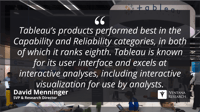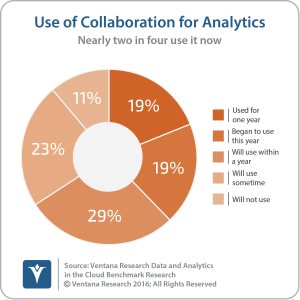I am happy to offer some insights on Tableau drawn from our latest Value Index research, which provides an analytic representation of our assessment of how well vendors’ offerings meet buyers’ requirements. TheVentana Research Value Index: Analytics and Business Intelligence 2019is the distillation of a year of market and product research efforts byVentana Research. We utilized a structured research methodology that includes evaluation categories designed to reflect the breadth of the...
Read More
Topics:
Data Science,
Tableau,
Mobile Technology,
Analytics,
Business Intelligence,
Cloud Computing,
Collaboration,
Digital Technology
More than 13,000 self-described “data and visualization nerds” gathered in Austin, TX, recently for Tableau Software’s annual customer conference. In his inaugural keynote, Tableau’s new CEO, Adam Selipsky, said that nearly 9,000 were first-time attendees. I was impressed with the enthusiasm of the customers who had gathered for the event, cheering as company officials reviewed product plans and demonstrated new features. This enthusiasm suggests Tableau has provided capabilities that resonate...
Read More
Topics:
Big Data,
Tableau,
Analytics,
Business Intelligence
Tableau Software officially released Version 6 of its product this week. Tableau approaches business intelligence from the end user’s perspective, focusing primarily on delivering tools that allow people to easily interact with data and visualize it. With this release, Tableau has advanced its in-memory processing capabilities significantly. Fundamentally Tableau 6 shifts from the intelligent caching scheme used in prior versions to a columnar, in-memory data architecture in order to increase...
Read More
Topics:
Big Data,
Data Visualization,
Enterprise Data Strategy,
Tableau,
Analytics,
Business Analytics,
Business Intelligence,
CIO,
In-Memory Computing













